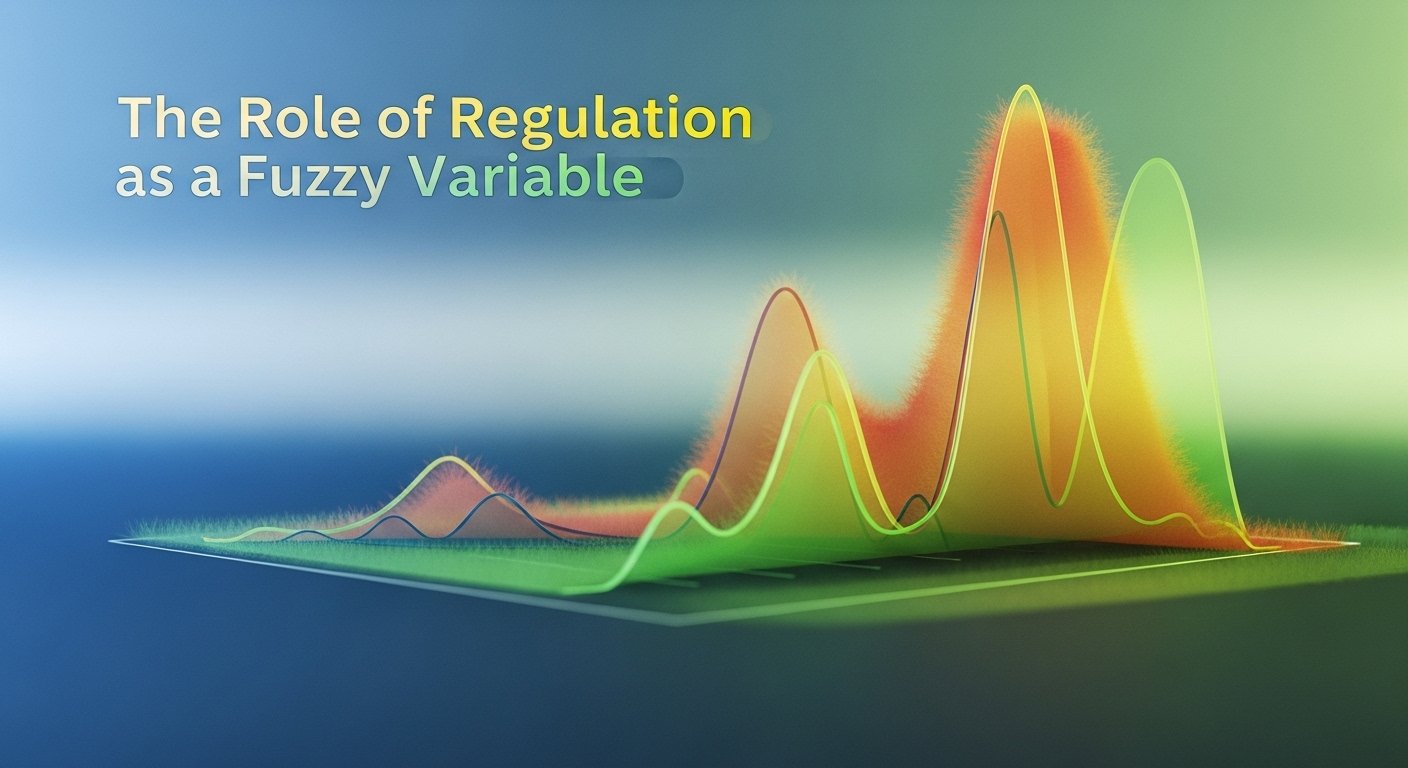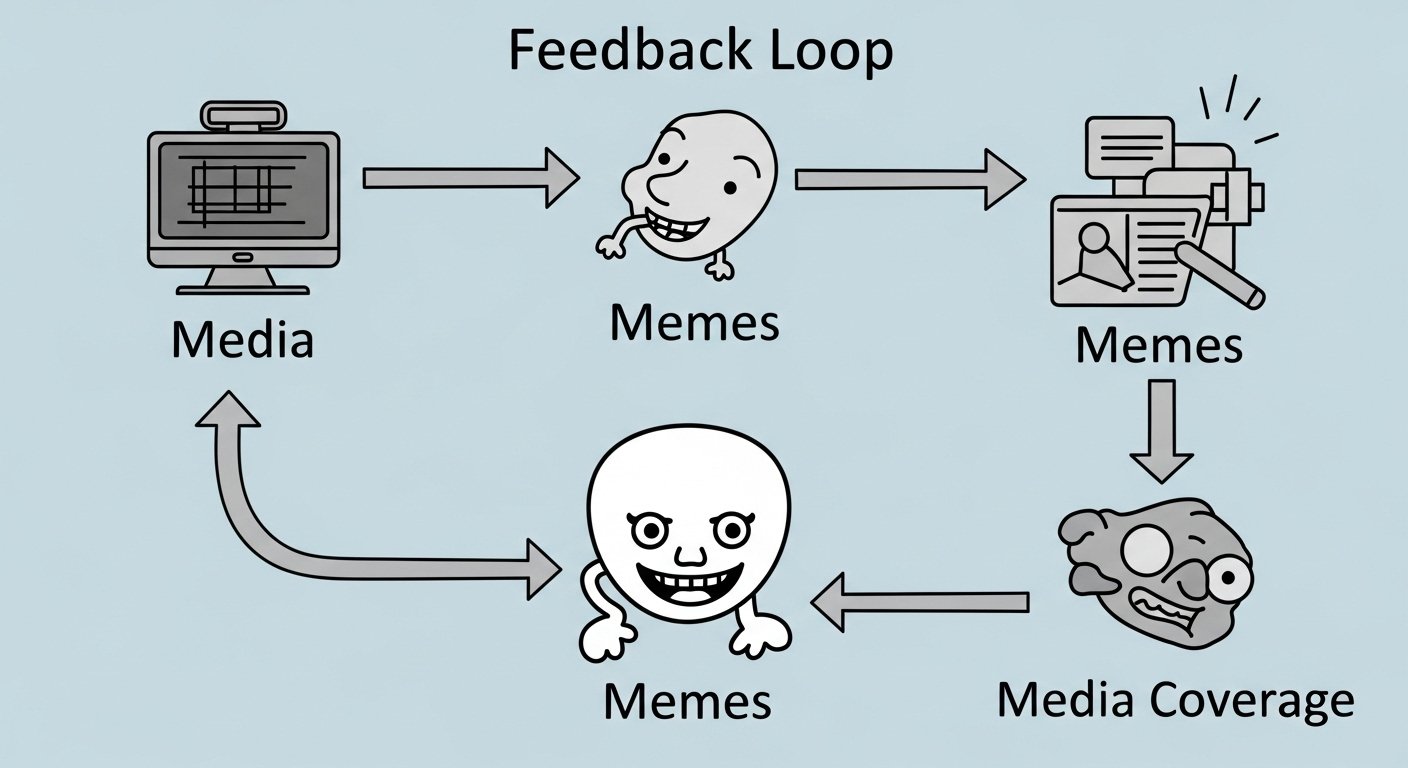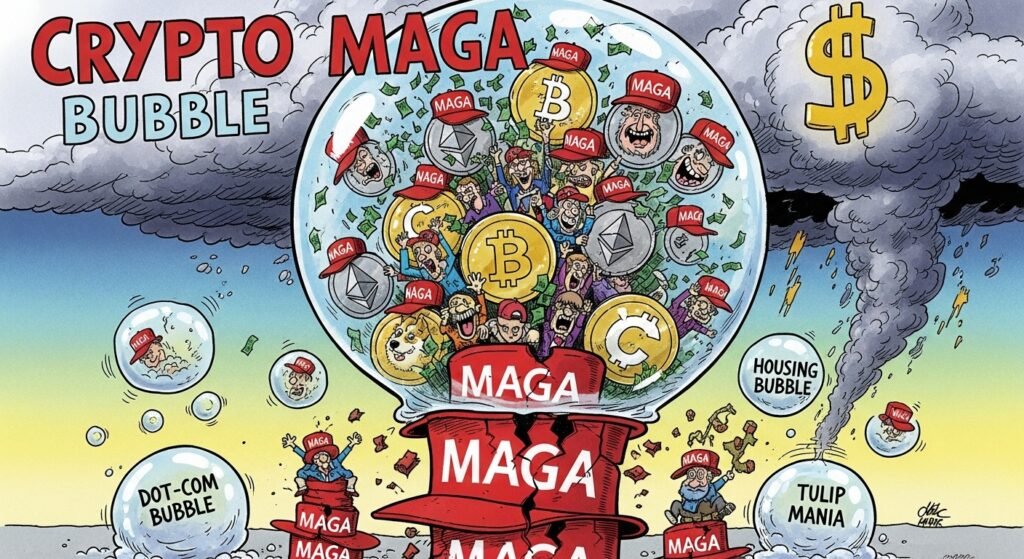A political crypto bubble differs significantly from the usual cycles seen in the broader cryptocurrency market. Traditional bubbles often stem from the excitement surrounding cutting-edge technology or innovative financial tools. In contrast, MAGA-themed bubbles grow from political symbolism, cultural tension, and the emotional thrill of aligning one’s financial decisions with personal beliefs. This makes the bubble both powerful and precarious.
The rise often begins with a rapid amplification of political narratives that tap into already polarized communities. These communities are accustomed to sharing slogans, memes, and expressions of loyalty, and this dynamic easily extends into the world of token trading. When a coin is framed as a symbol of victory or resistance, its demand expands quickly. Each small increase in price reinforces the idea that the movement is gaining power, creating a loop of confirmation that attracts more buyers. The sense of urgency grows as supporters view investment as a form of participation in the broader political struggle.
During this escalation, objectivity becomes difficult. Prices reflect emotional enthusiasm rather than measurable progress. What begins as a symbol of identity transforms into a speculative frenzy, vulnerable to the same forces that have historically destabilized financial bubbles throughout economic history.
What Is the “Mamdani Pin” in This Context?
The concept of a Mamdani pin comes from the Mamdani model in fuzzy logic, a system designed to interpret multiple uncertain signals and combine them into a single outcome. Instead of treating market conditions as clear-cut or binary, the model recognizes degrees of truth and varying levels of influence. Applied to the MAGA crypto landscape, a Mamdani pin represents the moment when many small pressures finally align. None of these pressures, taken alone, is enough to collapse confidence, but together they become overwhelming.
For instance, a slight decline in public enthusiasm might initially go unnoticed, as would modest regulatory warnings or gradual drops in trading activity. However, when these indicators begin to move in the same direction, they slowly create a cumulative sense of instability. Investors who were once confident start to perceive risks more clearly. Those who were guided primarily by emotion begin to reconsider their positions. Eventually, the combined weight of these subtle signals reaches a tipping point. The bubble that once seemed sustained by passion and identity suddenly loses its foundation. The metaphorical Mamdani pin pierces the illusion, revealing the fragility beneath the political bravado.
Sentiment, Identity, and the Illusion of Immunity
One of the most influential forces behind MAGA-themed crypto is the belief that political loyalty can somehow shield a token from ordinary economic pressures. Investors who treat the token as a badge of identity often assume that its value is tied to the strength of the movement rather than the logic of the market. This produces an illusion of immunity. As long as the ideology remains potent, many assume the token must follow.
Yet financial markets do not obey political symbolism. Even the most passionately held movement cannot guarantee continuous demand or expanding liquidity. When sentiment shifts, even slightly, the impact can be profound because the value of the token is so tightly linked to emotional confidence. If the underlying cause loses momentum or becomes overshadowed by other political developments, the token may suffer, regardless of community loyalty.
Identity-driven investors often hold longer than they should, interpreting warning signs as temporary setbacks rather than foundational weaknesses. But when enough individuals begin to question whether belief alone can sustain a market, the illusion collapses quickly, leaving little to support the price once enthusiasm fades.
The Role of Regulation as a Fuzzy Variable
Regulation plays a complex and unpredictable role in the fate of politicized cryptocurrencies. Government agencies rarely deliver instant and final judgments. Instead, they release a series of signals—public advisories, early investigations, new guidelines—that create uncertainty rather than clarity. In fuzzy logic terms, regulatory pressure is neither fully present nor entirely absent, but exists in shifting degrees that investors struggle to interpret.

For MAGA tokens, the legal environment is particularly precarious. Tokens that use the likeness, slogans, or branding of public figures may draw extra scrutiny. Questions arise about whether the token constitutes an unregistered security, an unauthorized commercial use of political identity, or even a deceptive financial product. Early signs of concern often go ignored during the peak of enthusiasm, but each additional regulatory development deepens the sense that the asset is vulnerable.
As these concerns accumulate, exchanges may grow reluctant to list or support the token. Developers may become more cautious, slowing updates or distancing themselves from controversial affiliations. Over time, regulation as a fuzzy variable becomes a powerful contributor to the eventual piercing of the bubble.
Liquidity, Whales, and the Sudden Pop
Liquidity and the behavior of large holders play decisive roles in how a bubble ends. In many MAGA-themed tokens, a small number of wallets control a significant share of the supply. During the early stage of excitement, these holders benefit from rising prices and growing community enthusiasm. The market appears robust because retail participants are buying aggressively, creating the illusion of widespread grassroots demand.
As enthusiasm matures, however, liquidity often begins to thin. Daily trading volume drops, and the order books become less stable. Large holders recognize this shift long before the general public. They understand that exiting in a timely manner requires liquidity, and they act accordingly. When several major holders begin selling simultaneously, the impact on price can be dramatic. The rapid decline triggers panic among smaller investors who may have believed the token’s political identity made it unbreakable.
This moment is where the Mamdani pin becomes most visible. Liquidity concerns merge with weakening sentiment, growing regulatory uncertainty, and fading media enthusiasm. The market transitions abruptly from confidence to fear, and the bubble that once felt culturally invincible collapses under the combined pressure.
Media, Memes, and the Feedback Loop of Hype
The media landscape surrounding MAGA crypto adds yet another layer of volatility. Coverage often begins with fascination, framing the tokens as curious expressions of political culture intersecting with digital finance. This kind of exposure drives curiosity and encourages more investors to explore the market. Social media intensifies the effect by turning political slogans into viral content that amplifies price movements.

Over time, however, media narratives shift. Stories about losses, scams, impersonation controversies, or regulatory concerns inevitably surface. The tone changes from playful interest to skeptical analysis. Online influencers who once praised the token may quietly distance themselves as the hype fades or as they complete their profit-taking strategies. Memes that once celebrated the asset become overshadowed by warnings and criticism.
This shift in narrative contributes significantly to the buildup of pressure beneath the surface. The same channels that inflated the bubble now help accelerate its deflation, reinforcing the cumulative signals that converge toward the Mamdani-style tipping point.
Can MAGA Crypto Evolve Beyond the Bubble?
While it is easy to dismiss MAGA-themed cryptocurrencies as temporary spectacles, the concept raises an interesting question about the future of political digital assets. It is possible to imagine a scenario in which these tokens evolve into tools with genuine practical value. They could, in theory, support decentralized political fundraising, promote transparent allocation of resources, or offer new ways of coordinating grassroots initiatives.
For such evolution to take place, however, the tokens must move away from purely symbolic functions. They would need clear governance structures, transparent token economics, and mechanisms that encourage responsible participation rather than speculative frenzy. Most importantly, they would require a shift from emotional momentum to sustained utility. Without meaningful applications beyond identity expression, the tokens remain vulnerable to sentiment-driven collapse.
A transformation of this scale is unlikely without a fundamental redesign of the projects themselves. Even so, the possibility exists, and it suggests that while the current bubble may eventually burst, the underlying idea could inspire more mature forms of political engagement through blockchain technology.
How Investors Can Navigate Crypto’s MAGA Bubble
Investors who encounter MAGA-themed crypto must balance emotional distance with analytical clarity. Political tokens are uniquely capable of blurring the line between belief and investment, encouraging individuals to equate financial commitment with loyalty. This dynamic is dangerous because it clouds judgment and increases vulnerability to market manipulation.
The best approach is to treat emotionally charged tokens as high-risk assets and evaluate them according to the same standards applied to any speculative investment. This includes examining liquidity patterns, developer activity, token distribution, market depth, and legal exposure. Even moderate shifts in these factors should prompt thoughtful reassessment.
A Mamdani-style mindset can help investors recognize when multiple small concerns are beginning to align. When enthusiasm cools, when regulatory commentary grows more pointed, when media coverage turns uncertain, and when liquidity begins to evaporate, these are signs that the bubble may be drifting toward its breaking point. Those who recognize the buildup early are better positioned to protect their capital.
Conclusion
The fusion of political identity with cryptocurrency has created one of the most emotionally charged and unpredictable segments of the digital asset market. MAGA-themed tokens reflect a desire to merge cultural allegiance with financial participation, but this same emotional intensity makes them vulnerable to dramatic swings in confidence. The metaphor of the Mamdani pin highlights how bubbles rarely collapse because of a single catastrophic event. Instead, they unravel as numerous subtle pressures converge into a decisive tipping point.
Crypto’s MAGA bubble may still have moments of excitement ahead, but its long-term trajectory depends on whether it can evolve beyond sentiment-driven trading into something with real-world utility. Until that happens, the forces of regulation, liquidity, media narratives, and shifting public sentiment will continue to exert pressure. Those who understand these dynamics can better navigate a market where politics and price action collide in unpredictable ways.
FAQs
1. What does the term “crypto’s MAGA bubble” refer to?
It refers to the rapid rise of MAGA-themed cryptocurrencies whose value is driven primarily by political enthusiasm and cultural identity rather than technological innovation or sustainable utility. The term highlights the speculative nature of these assets and the emotional forces that influence their price movements.
Q: How does the Mamdani pin apply to the crypto market?
The Mamdani pin is a metaphor inspired by fuzzy logic, where multiple uncertain factors merge into a final decisive outcome. In the crypto market, it represents the moment when regulatory concerns, liquidity problems, weakening sentiment, and shifting media narratives collectively cause a bubble to burst, even if none of these factors would be catastrophic on their own.
Q: Are MAGA-themed tokens inherently risky?
Yes. These tokens are especially risky because their value depends heavily on political sentiment and social narratives, both of which can shift rapidly. Without strong fundamentals, development progress, or practical use cases, they remain vulnerable to sudden changes in public opinion or regulatory action.
Q: Can political cryptocurrencies develop real utility?
They can, but only if they move beyond symbolic representation and offer functional tools such as transparent fundraising systems, verifiable governance platforms, or meaningful community utilities. Most current projects do not meet these standards, but future iterations may evolve in that direction.
Q: What should investors consider before buying politicized crypto tokens?
Investors should focus on liquidity, token distribution, developer activity, regulatory exposure, and the overall health of the community. They should also be aware of how political identity can cloud judgment and make them more susceptible to volatility. A rational assessment of risks is essential when dealing with tokens closely tied to cultural or ideological movements.
Also Read: Crypto Market Breadth Improves as Altcoins Rebound


